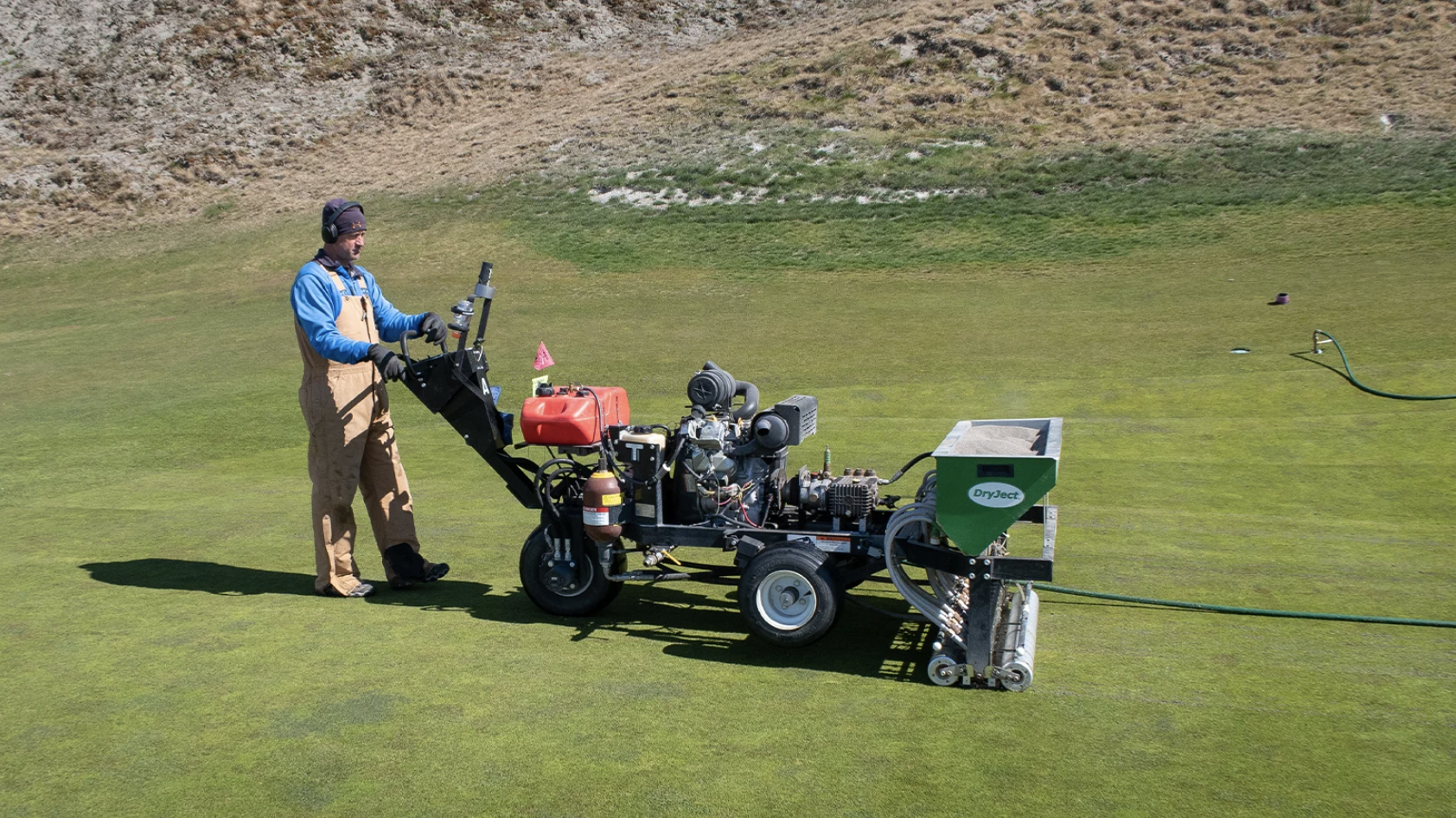USGA – West Update – Sign of the Tines
March, April and May are prime months for aeration. Air and soil temperatures are rising. Growing conditions are optimal for many of the cool-season turfgrasses grown in the West, and rain showers occur often enough that you have a great recipe for quick recovery after aeration.
In recent discussions with superintendents in the Pacific Northwest, it has become clear that there are as many different opinions on how to aerate as there are on how our country gets back to “normal” after COVID-19. Consider the following approaches to putting green aeration from three different courses this spring:
Course A: Double verticut, aerate with 0.5-inch hollow tines, clean up and topdress to fill holes. Deep-tine aeration one week later followed by more sand.
Course B: DryJect, verticut and topdress as needed afterward for surface smoothing.
Course C: A heavy topdressing application followed by deep-tine aeration to a 6-inch depth, followed by 0.5-inch solid-tine aeration to a 3-inch depth. Finish by mechanically brushing remaining sand into the holes.
Each of these courses is managed by some of the brightest superintendents in our business. All of them consistently produce exceptional playing surfaces. These three examples are all on Poa annua greens. So, why doesn’t everybody do it the same way?
While the procedures are different, these superintendents are all trying to accomplish at least two common goals: reducing and diluting the organic matter content in the rootzone by adding sand, and improving water infiltration through the rootzone.
Aeration provides a great opportunity to incorporate sand into the rootzone and temporarily improves infiltration rates. However, each of these course managers recognizes that while the methods of aeration can vary, an important part of managing organic matter is making light and frequent sand topdressing applications throughout each growing season.
Research has shown that aeration methods – whether they utilize solid tines, hollow tines or any number of other techniques – are less important than consistent applications of sand during the growing season for managing organic matter accumulation. So, how much sand should you apply?
The target range of sand to apply during the year will be different for every course, but a good range to start with will be 22-35 cubic feet of sand per 1,000 square feet per year. This number should include the amount of sand applied during aeration events.
As this growing season kicks into high gear, it is important to schedule regular light topdressing events throughout the season to ensure the best putting surfaces for your facility.
West Region Agronomists:
Brian S. Whitlark, agronomist – bwhitlark@usga.org
Cory Isom, agronomist – cisom@usga.org
